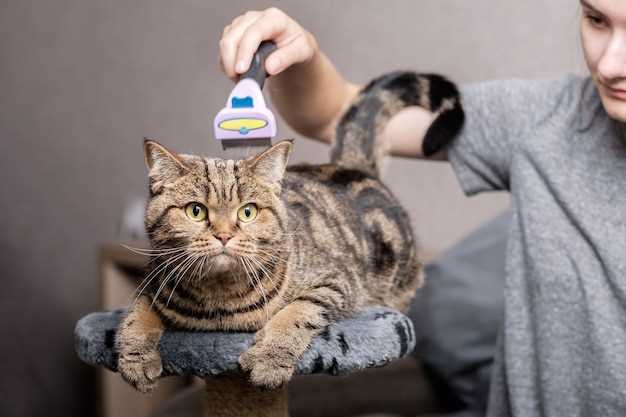
Are you wondering how to give azithromycin to cats? Look no further! Our expert guide provides easy-to-follow instructions on administering this essential medication to your beloved pet. Azithromycin is commonly prescribed for feline respiratory infections, and proper administration is crucial for your cat’s well-being.
Learn the proper dosage, administration techniques, and tips for ensuring your cat receives the full benefits of azithromycin. Give your feline companion the care they deserve with our comprehensive guide!
Importance of Azithromycin
Azithromycin is an essential antibiotic that is commonly used to treat various bacterial infections in cats. It is particularly effective against respiratory infections, skin infections, and urinary tract infections. Azithromycin works by inhibiting the growth of bacteria, thereby helping the cat’s immune system to fight off the infection.
It is crucial to use azithromycin under the guidance of a veterinarian to ensure the correct dosage and administration. Misuse of antibiotics can lead to antibiotic resistance, making it harder to treat infections in the future. Therefore, it is vital to understand the importance of using azithromycin responsibly and only as prescribed by a professional.
Understanding Cat Health
Azithromycin is an important medication for treating bacterial infections in cats. It is commonly used to combat a variety of illnesses, such as respiratory infections, skin infections, and urinary tract infections. It is crucial to understand the signs of a bacterial infection in cats and to seek proper veterinary care if you suspect your pet is ill.
Cats can be prone to bacterial infections due to their outdoor lifestyle, exposure to other animals, and their grooming habits. Symptoms of a bacterial infection in cats may include lethargy, loss of appetite, sneezing, coughing, and changes in behavior. It is essential to consult with a veterinarian to confirm a bacterial infection and determine the appropriate treatment plan.
Proper dosage and administration of antibiotics like azithromycin are vital to ensure the health and well-being of your feline companion. Your veterinarian will provide specific guidelines on how to administer the medication, the correct dosage based on your cat’s weight, and the duration of treatment. It is important to follow these instructions carefully to maximize the effectiveness of the antibiotic and prevent the development of antibiotic resistance.
Dosage Guidelines
When administering azithromycin to cats, it is crucial to follow the dosage guidelines provided by your veterinarian. The dosage of azithromycin for cats is typically based on the cat’s weight, and it is important to give the correct amount to ensure effective treatment.
General Dosage Guidelines:
| Cat Weight | Azithromycin Dosage |
|---|---|
| 5-10 lbs | 1/4 to 1/2 of a 250mg tablet once daily |
| 10-15 lbs | 1/2 to 3/4 of a 250mg tablet once daily |
| 15-20 lbs | 3/4 to 1 whole 250mg tablet once daily |
It is important to always consult with your veterinarian before giving azithromycin to your cat to ensure the correct dosage is being administered. Additionally, make sure to follow the prescribed schedule for giving the medication and complete the full course of treatment as directed.
Administration Techniques

When administering Azithromycin to your cat, it’s important to follow proper techniques to ensure the medication is given correctly and effectively. Here are some tips for administering Azithromycin to your feline friend:
| 1. Consult Your Veterinarian: | Before giving Azithromycin to your cat, consult your veterinarian for proper dosage instructions and guidelines. |
| 2. Use the Correct Dosage: | Make sure to measure the correct dosage of Azithromycin based on your cat’s weight and the prescribed amount. |
| 3. Administer Orally: | Administer the Azithromycin orally by using a syringe or dropper to ensure accurate delivery. |
| 4. Mix with Food: | If your cat is reluctant to take the medication, you can mix it with a small amount of food to mask the taste. |
| 5. Monitor Response: | Monitor your cat’s response to the medication and contact your veterinarian if you notice any unexpected side effects. |
Monitoring Cat’s Response

It is crucial to monitor your cat’s response to Azithromycin treatment closely. Keep an eye on any changes in your cat’s behavior, appetite, and overall health. If you notice any unusual symptoms or side effects, contact your veterinarian immediately.
Signs of Improvement
Look for signs that indicate your cat is responding positively to the medication. These may include a decrease in symptoms, improved appetite, and increased energy levels. Positive changes suggest that the medication is working effectively.
Signs of Adverse Reactions
Be aware of potential adverse reactions to Azithromycin. Watch out for symptoms such as vomiting, diarrhea, or lethargy. If your cat experiences any of these side effects, stop the medication and consult your veterinarian for further guidance.
